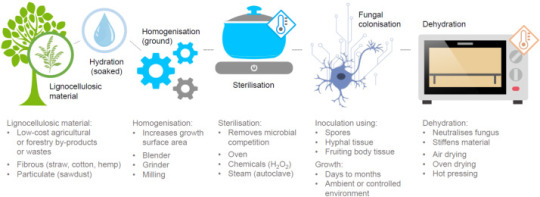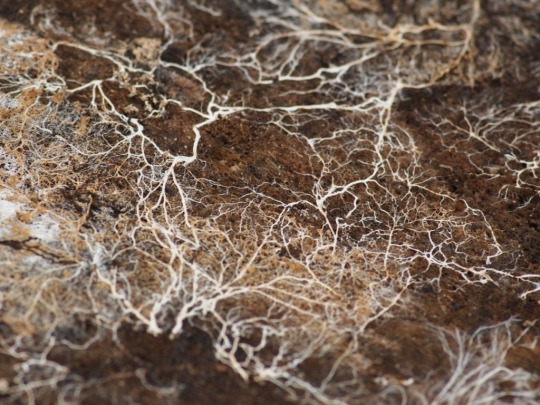Don't wanna be here? Send us removal request.
Text
Copy of Can Fungal Biomass Make Construction More Sustainable?
The construction industry is an ever-growing problem when it comes down to sustainability. The population continues to grow and this requires more and more buildings to accommodate people's lives. More and more materials are required to construct buildings, and so naturally, more and more carbon is emitted into our atmosphere from these construction processes. But we can't just put a pause on population growth, or ban new buildings from being built, and we certainly can't just pretend this problem doesn't exist either.
How about focusing on improving the sustainability of the materials that are used in construction? What alternatives might there be to ensure more sustainable construction processes are used?
… that's where fungal biomass comes in.
Fungal Biomass... what is that exactly?
Biomass is a renewable material that's made from plants and animals. It can be used as energy or turned into useful materials. With fungal biomass, agricultural waste and other low-grade discarded materials (stalks, straw, sawdust, etc.) are used as substrates which are introduced to a fungus to create a material bound together by mycelium.
To create the mycelium material, a process must be followed to ensure good performance of the material.

For an explanation of this process check here, and refer to section 2.
Here are some important material properties of mycelium materials:
Handles tensile loading well
Has some compressive loading capabilities
Highly flame resistant
It has a very low thermal conductivity
Very high moisture uptake
Okay, sounds great! But what can the mycelium material be used for?
Structural application:
Mycelium has shown an ability to handle tensile loading well, however it has a low ability to withstand compressive loads, meaning the material is weak compared to traditional construction materials. Since structural materials are required to transfer heavy loads, this material wouldn't be effective and therefore is not being considered for structural use.
Thermal insulation:

Mycelium composite is a low-density material, which makes it an excellent insulator as low-density materials conduct heat slower. It performs similarly to other traditional insulators such as glass wool, extruded polystyrene, sheep wool etc.
Water absorption:
Moisture content will also have an impact on the thermal conduction. If mycelium insulation is exposed to moisture for more than a few hours, it can absorb it quickly and in large amounts. Luckily a large increase in moisture content results in just a small increase in heat conductivity. Check here for more(section 3.0).
Other risks resulting from moisture absorbency has delayed the journey of this type of insulation making it into people's homes, but hopefully solutions can be found as this type of insulation would make some amazing competition.
Fire safety:
Mycelium composite out-performs many conventional insulation materials. A mycelium composite can even perform so well under exposure to fire that its only competitor is phenolic formalhyde resin foams.
"Mycelium has been found to possess certain flame-retardant properties (e.g. high char residue and release of water vapour)"
More on that quote here.
Since the material would mainly char rather than burn, it would take longer for flames to travel through a cavity if it were filled with it. The material is also non-toxic therefore it is much safer than other insulators.

Read here for more information on thermal degradation and fire reaction properties of mycelium composites.
Why is this new material so important?
Mycelium material is completely biodegradable and renewable, it has a perfect life cycle and its cheap, what's more to love?
Discovering uses for fungal biomass and applying them is super important for the construction industry as it hopefully will kickstart a greater interest in building with sustainable materials. The current applications of this product are limited; however this material makes promise for the future of sustainability in construction.
Take a look at some videos and other helpful sources if you're still interested!
Engineered mycelium composite construction materials from fungal biorefineries: a critical review
Is Mycelium Fungus the Plastic of the Future?
Can Mycelium Fungus replace Concrete & Plastic?
Biohm
Ecovative
8 notes
·
View notes